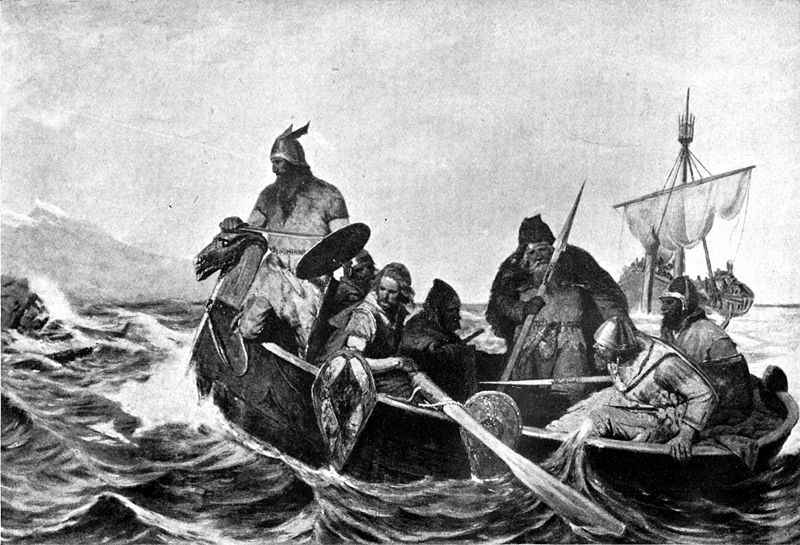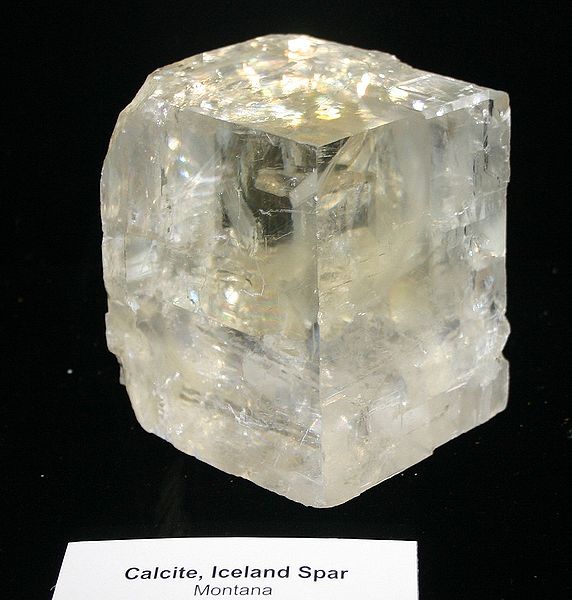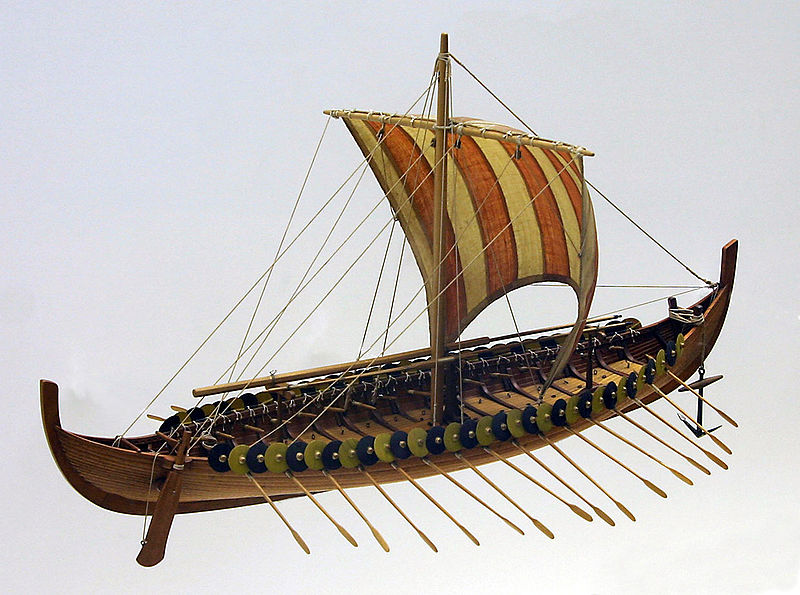
Did the Vikings have a magical sunstone that glowed to show the location of the Sun behind the clouds? Viking mythology includes the following intriguing tale:
"The weather was very cloudy, it was snowing. Holy Olaf, the king sent out somebody to look around, but there was no clear point in the sky. Then he asked Sigurd, to tell him, where the Sun was. After Sigurd complied, he grabbed a sunstone, looked at the sky and saw from where the light came, from which he guessed the position of the invisible Sun. It turned out, that Sigurd was right."
The story mystified historians until Danish archaeologist Thorkild Ramskou suggested in 1967 that no magic was required - the sunstone could have been a polarising crystal. With such stones, Viking navigators could have used polarised light to aid their long sailing trips across the north Atlantic, almost a millennium before polarisation was first officially described in the 17th century.
It's great theory, and despite the lack of direct evidence, it has become popular since Ramskou suggested it. In recent years, however, scientists have been investigating the plausibility of the idea - whether such sunstones would actually have worked. They review their efforts in a paper published today in Philosophical Transactions of the Royal Society B, which I've written about for Nature News.
Viking seafarers routinely sailed thousands of kilometres across the North Atlantic, for example from Norway to Greenland, between around 700 and 1050 AD. How they managed it has been a bit of a mystery - during the summer sailing season there would have been almost perpetual daylight, so stars would have been of limited use.
Ramskou figured that the Vikings must have watched the Sun instead. Part of a wooden disc with curved lines on it has been found dating from Viking times. Ramskou and others have interpreted this as a type of sundial called a Bearing dial - by lining up the Sun's shadow with the curved marks on the dial, the navigators could have ensured they were heading in the right direction.
This method wouldn't have worked in cloudy or foggy weather, which could easily have lasted for days. But if the Vikings had sunstones to tell them the location of the Sun, they could then use a flame or torch to light the sundial from that direction and check their course.
 So how would the stones work? Polarising crystals such as cordierite, or a type of calcite known as Iceland spar, transmit light differently depending on the direction in which it is polarised (ie the plane in which the peaks and troughs of the light wave are oriented). Some appear bright or dark depending on their orientation with respect to the polarisation of the light hitting them, others change colour, for example from blue to yellow.
So how would the stones work? Polarising crystals such as cordierite, or a type of calcite known as Iceland spar, transmit light differently depending on the direction in which it is polarised (ie the plane in which the peaks and troughs of the light wave are oriented). Some appear bright or dark depending on their orientation with respect to the polarisation of the light hitting them, others change colour, for example from blue to yellow.
Sunlight becomes polarised as it bounces off air molecules in the atmosphere, with the line of polarisation tangential to circles centred on the Sun. In theory, then, by holding a polarising crystal up to the sky and rotating it, you can work out the direction of the Sun, even without being able to see it directly.
But is the pattern of polarisation strong enough to allow use of a sunstone, and in what weather conditions? Gábor Horváth of the environmental optics lab at Eötvös University in Budapest, Hungary, and colleagues from Spain, Germany, Finland and Switzerland have carried out a range of studies looking at this, published over the last few years.
In particular, Horvath and his colleague Susanne Åkesson, a migration ecologist from Lund University, Sweden, travelled to the North Pole on the Swedish icebreaker Oden, and measured the polarisation pattern of the sky's light in a range of weather conditions. The equipment to do this has only recently become available, and the maps they produced are also of interest for studying how some birds and animals navigate using polarised light.
The researchers found that contrary to what many had assumed, the pattern of polarisation of the sky's light is very similar in foggy or cloudy conditions to the pattern you get with clear skies. So the information regarding the Sun's position is still there. The polarisation isn't as strong, however, leaving it an open question as to whether sunstones would be sensitive enough to detect it. In their recent paper, Horvath and his colleagues conclude that in a totally overcast sky the oscillation in the intensity of the light through a polarising crystal would be hardly visible.
But when I spoke to Akesson she was much more positive, saying that she has tried using such crystals herself in these conditions, and that the variation in brightness as she turned the stone was easy to see. The researchers' next step is to carry out quantitative studies with the crystals to check how accurate they are, and determine whether it would have been possible to locate the Sun well enough to be useful for navigation.
 Of course all this can only say whether or not the method would have worked, not that the Vikings definitely used it. That would require archaeological evidence - for example finding such a crystal on a shipwreck or in some other maritime context. Archaeologists such as Christian Keller of the University of Oslo also point out that even the identity of the wooden sundial is in question. It was found in a nunnery so there's no reason to think it had anything to do with sailors or navigation, he says, unless you want to tell stories about what sailors were doing in a nunnery...
Of course all this can only say whether or not the method would have worked, not that the Vikings definitely used it. That would require archaeological evidence - for example finding such a crystal on a shipwreck or in some other maritime context. Archaeologists such as Christian Keller of the University of Oslo also point out that even the identity of the wooden sundial is in question. It was found in a nunnery so there's no reason to think it had anything to do with sailors or navigation, he says, unless you want to tell stories about what sailors were doing in a nunnery...
What we do know from written records is that Viking sailors judged their route across open sea by combining lots of different pieces of information, including the position of the Sun (on clear days), wind direction, appearance of clouds over distant land, bird flight paths and whale sightings. Which I reckon is just as impressive as using sunstones.